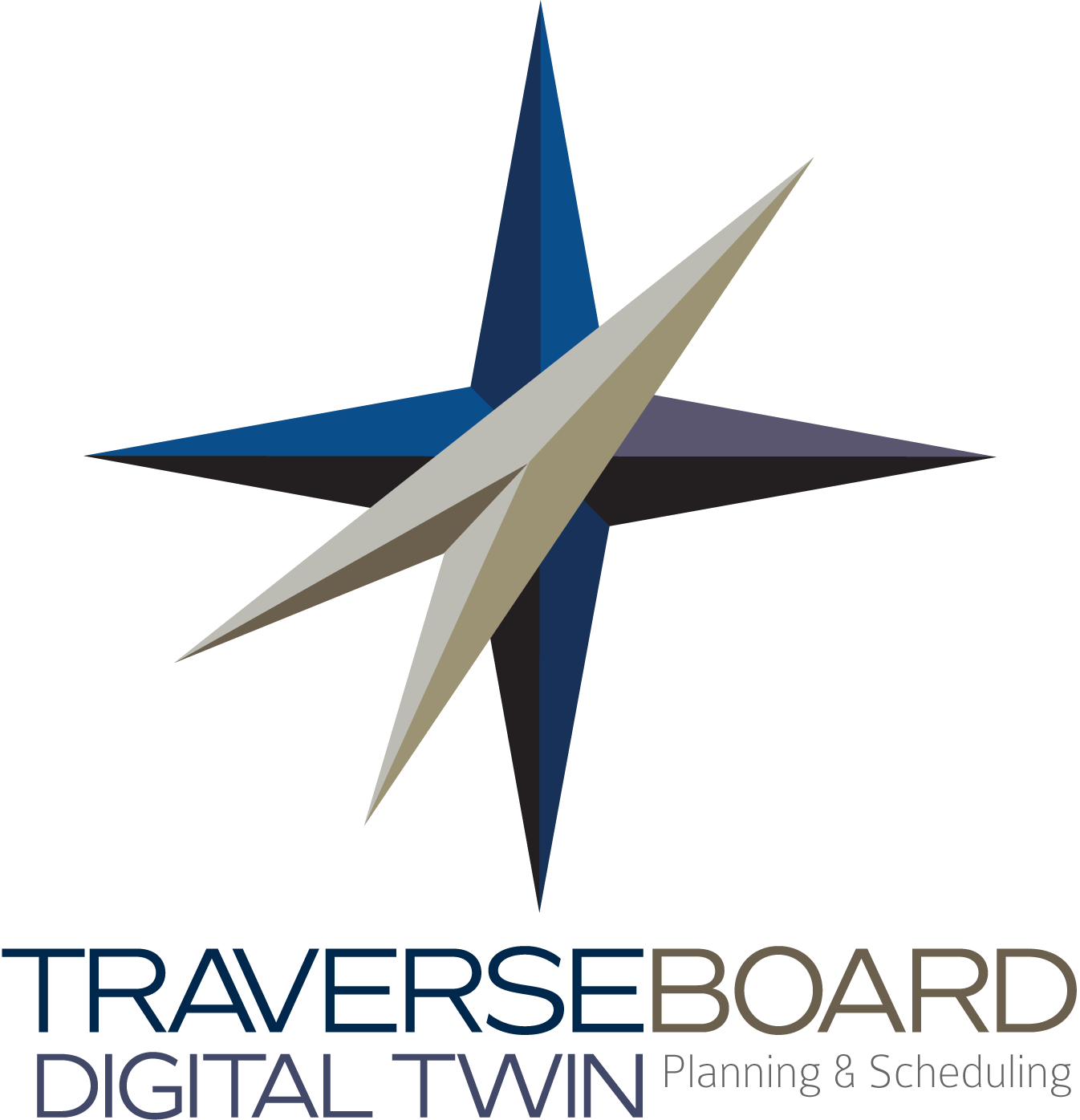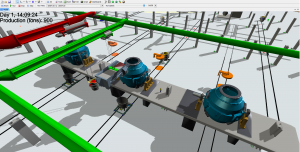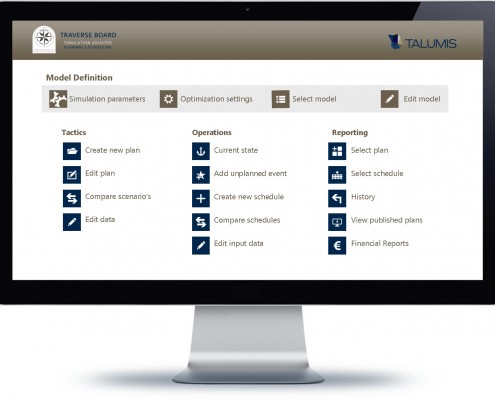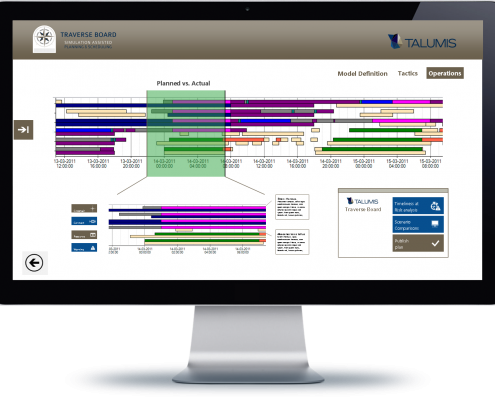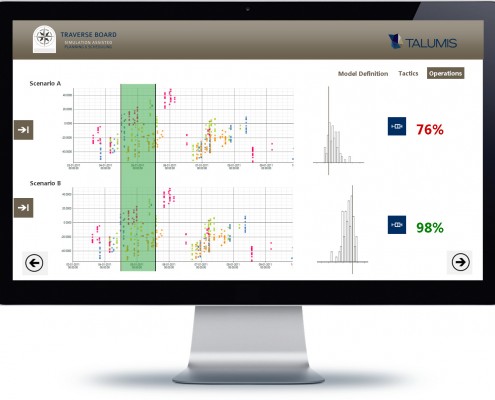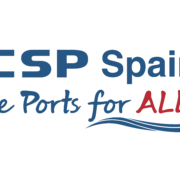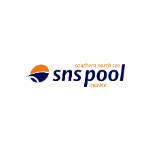DIGITAL TWINS – TraverseBoard Advanced Planning & Scheduling
Digital Twin assisted planning & scheduling software
Traverse Board is a custom made software tool to create Digital Twin solutions. Digital Twins enable tactical and operational decisions through multiple time horizons. Traverse Board’s calculation core consist of simulation models and strengthened with optimization algorithms brought together by a customizable user-friendly interface. The tool is typically used in high risk and high investment businesses.
Traverse board is a comprehensive platform for creating Digital Twins, creating optimized robust plans and schedules through multiple time horizons.

